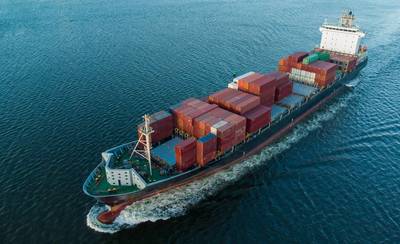Global Container Freight Stuck in Doldrums
Global trade remained in the doldrums during the second quarter as China’s post-lockdown rebound proved slower than expected and was offset by continued weakness in North America and Europe.
Seasonally-adjusted trade volumes were no higher in the three months from February to April 2023 than they had been 17 months earlier in the three months from September to November 2021.
Volumes were down in three of the first four months of 2023 compared with a year earlier, according to the Netherlands Bureau of Economic Policy Analysis (“World trade monitor”, CPB, June 23).
Growth from China and to a lesser extent other emerging markets in Asia was offset by a small contraction from the United States and much larger ones from Japan, the European Union and especially the United Kingdom.
Britain’s reputation as the sick man of the global economy was cemented by the fastest contraction in both import and export volumes from February to April, more than twice as fast as any other major economic area.
China’s freight movements have rebounded as the country emerged from lockdowns and the exit wave of the epidemic, though not as fast as anticipated at the start of the year.
China’s coastal ports reported container throughput rose by 4% in the first four months of 2023 compared with the same period in 2022, according to the Ministry of Transport.
The port of Singapore, which acts as one of the major transshipment hubs between China, the rest of East Asia and Europe, also reported an increase in container throughput of 3% in the first five months of 2023.
But in other regions freight remained lower than a year ago, as consumer spending rotated from merchandise back to services after the pandemic, and rising interest rates hit spending on durable goods by both households and firms.
Traffic at seven of the nine major U.S. container ports (Los Angeles, Long Beach, Oakland, Houston, Charleston, Savannah and Virginia excluding Seattle and New York) was down 16% in the first five months of 2023.
The number of shipping containers hauled on the major U.S. railroads, many en route to and from the ports, was down by 10% in the first four months of 2023, according to the Association of American Railroads.
Truck tonnage movements were also down by a little under 1% compared with the same period a year earlier, based on data from the American Trucking Association.
At Japan’s Narita airport, international air cargo was down 25% in the first five months of 2023 compared with a year ago.
Freight through London’s Heathrow airport was down 8% in the first five months of 2023 at the lowest level since the pandemic in 2020 and before that the financial crisis and recession in 2009.
Some freight is likely to have been shifted from air to sea as supply chain bottlenecks ease and shippers focus on cost control, but the downturn in merchandise shipments is unmistakeable across the advanced economies.
The most optimistic interpretation is that freight volumes have stabilized, after declining sharply in the second half of 2022, but there is no sign yet of a recovery outside China.
(Reuters - John Kemp is a Reuters market analyst. The views expressed are his own. Editing by Barbara Lewis)

















